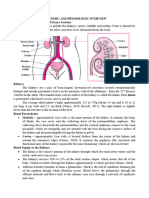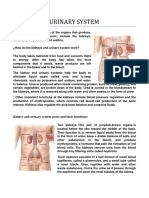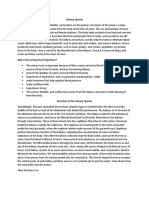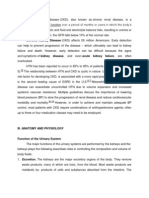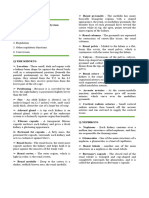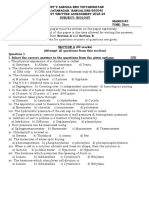0% found this document useful (0 votes)
48 views5 pagesTutorial Renal System
The urinary system consists of the kidneys, ureters, urinary bladder, and urethra. The kidneys filter waste from the blood to produce urine, which travels through the ureters to the bladder for storage and then exits the body through the urethra. The kidneys also help regulate water, electrolyte, and acid-base balance and produce hormones like erythropoietin and calcitriol to influence red blood cell production and calcium levels.
Uploaded by
Manesa ManeshaCopyright
© © All Rights Reserved
We take content rights seriously. If you suspect this is your content, claim it here.
Available Formats
Download as DOCX, PDF, TXT or read online on Scribd
0% found this document useful (0 votes)
48 views5 pagesTutorial Renal System
The urinary system consists of the kidneys, ureters, urinary bladder, and urethra. The kidneys filter waste from the blood to produce urine, which travels through the ureters to the bladder for storage and then exits the body through the urethra. The kidneys also help regulate water, electrolyte, and acid-base balance and produce hormones like erythropoietin and calcitriol to influence red blood cell production and calcium levels.
Uploaded by
Manesa ManeshaCopyright
© © All Rights Reserved
We take content rights seriously. If you suspect this is your content, claim it here.
Available Formats
Download as DOCX, PDF, TXT or read online on Scribd
/ 5
















